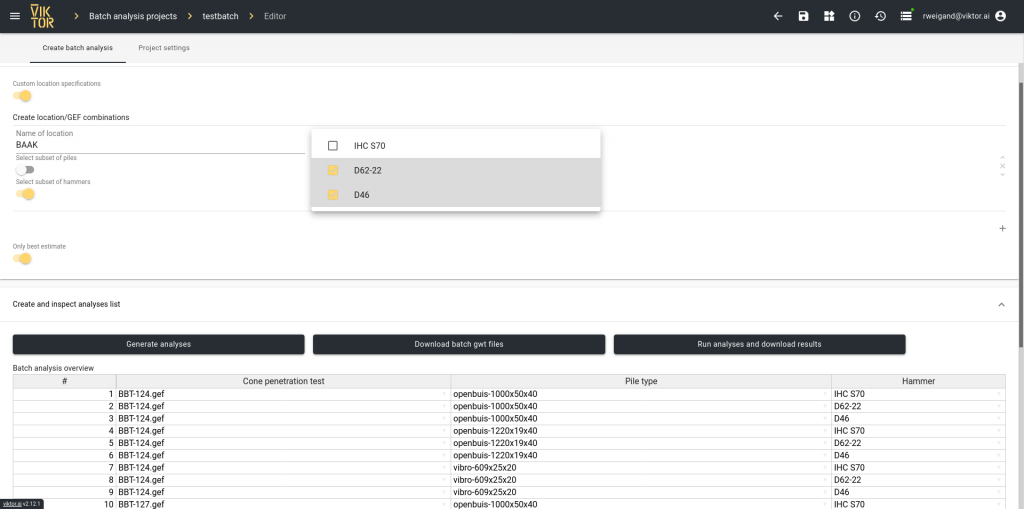April 30, 2020
A parametric tool for automated pile drivability analysis with GRLWEAP and Python

by VIKTOR


Download the white paper and get INSPIRED
Learn how collaborative parametric design models allow you to work together for better solutions.
GRLWEAP
With the software program GRLWEAP you can perform a driveability analysis. To do so, you enter the data of the soil (the probing), the hammer and the pile you want to use. It will then calculate for you how long the pile driving will take and to what extent you can get the pile into the ground. In itself there is nothing wrong with the analysis, it is just that everything has to be manually entered into the program, which is a time-consuming task that is also prone to human error.
Parametric design
The goal was therefore to design a parametric design tool in which the input no longer has to be done manually. This means that not every possibility has to be entered separately and therefore multiple analyses can be done in a short period of time. Performing automated batch calculations in GRLWEAP was something that had not been done before, so everything had to be figured out from the start.
Parameters
First, the input file had to be figured out. Which parameters do you want to control, so which variables are needed? Next, it was figured out how to get them into the input file and then write Python code to automatically build input files. These variables can be adjusted to the wishes of the user.
Automation
In GRLWEAP a ground structure is used, which is normally filled in manually by a geotechnical technician. He analyses the soil information to define the structure. The parametric design tool itself can interpret these probes and classify a soil structure. The soil structure is then translated (with some formulas) into a ground structure that GRLWEAP can read. Because a ground structure has to be defined per analysis, it was a time-consuming process to determine it manually. The automation therefore saves time.

Optimization
The real time gain lies in the batch analysis. You can enter different probes, types of hammers and types of piles and the tool will calculate all possible combinations. All results are collected and made understandable by means of tables. Here the optimal combinations can be extracted by the engineers.
Future opportunities
The current tool is suitable for various pile driving problems, such as office buildings, tunnels or houses. To make the tool more interesting and specific for offshore, other soil investigation programs could be added. This is because there are not always probes available, something on which the current tool depends. An example could be Rockworks.
See how you can create your own parametric design tools for automation and optimization as well.


